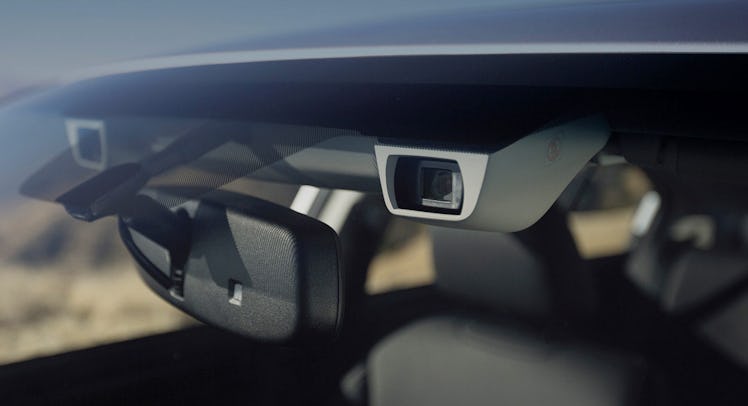The Coolest Safety Innovations From the 2017 New York Auto Show
Including Toyota's iPhone lockdown and Buick's pedestrian-catching hood.

Auto shows these days are more like technology expos wrapped in sheet metal. That’s because there are more lines of computer code in the average new car than there is behind Facebook. And not just luxury vehicles, either: the Ford F-150, for example, needs 150 million lines of code to run properly. A lot of that supercomputing muscle goes to safety — warning systems that alert drivers who drift out of their lane, automatic braking assistance if there’s an object in the road, onboard cameras that detect pedestrians. All of it designed to avoid accidents and keep families safe. As we toured the New York Auto Show last week, we paid close attention to the latest in safety technology. Here are four of the coolest innovations.
An iPhone Lock Down
More than 85-percent of drivers admit to texting and talking while behind the wheel. As such, Toyota’s taken measures into ther own hands to keep a phone out of yours. Their FT-4X concept has a slot on the dashboard for your phone, and once inserted, it locks in and becomes an integrated part of the car’s navigation system. It’s similar to Android Auto and Apple Car Play ⏤ systems that mirror your phone’s functions on discrete, dash-mounted screens ⏤ but is considered safer because the locking cradle won’t allow drivers to operate the phones except through button- or voice-control.
Environment-Sensing Headlights
The 2018 Lincoln Navigator was by far the biggest luxury SUV debut in New York, and it’s festooned with cool tech. The highlight was the speed-dependent adaptive headlights, which widen/shorten their low beams at slow speeds (so drivers can see what’s happening in residential or urban spaces) and lengthen/narrow them at higher speeds. Lincoln will also integrate Amazon Alexa into the Navigator, allowing drivers to ask for directions or restaurant recommendations on the fly.
Driver-Assist Cameras
Drivers can’t see everything from the wheel, Subaru makes up for what you might miss. The company’s EyeSight Driver Assist Technology uses a pair of cameras mounted on the windshield near the rearview to detect differential speeds of objects in front of the car. These work in conjunction with the car’s lane departure warning and lane assist systems, yes. But they also integrate with the automatic braking assistance during an emergency stop, cutting the gas if the driver’s foot is on the throttle when they should be braking. While none of this tech is entirely new, Subaru keeps putting it into lower-priced cars, forcing competitors to get serious about safety in non-luxury models.
A Pedestrian-Friendly Hood
Airbags protect drivers in the event of an accident, but what protects pedestrians? This question is obviously on the mind of designers at Buick, who outfitted the new TourX with a pyrotechnic actuator-equipped hood. These lift the hood about four-inches should the car come in contact with an innocent bystander, and they do so faster than any spring-loaded mechanism available. The idea, obviously, is to create a softer landing zone for any pedestrian who might have the misfortune of being hit. Of course, the TourX also gets pedestrian-detecting technology aimed at avoiding a collision altogether. This automatically forces the car to brake if it’s traveling between 16-30mph.
This article was originally published on